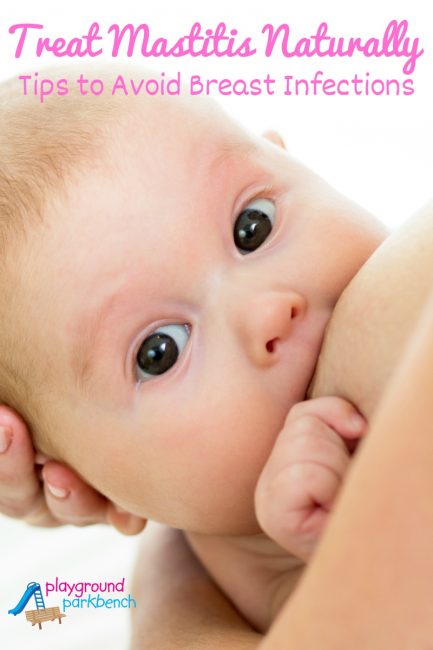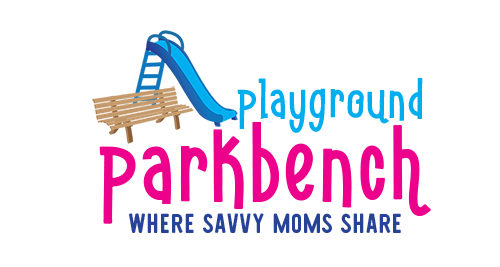Your baby is 2-3 months old. Your hormones are all over the place. You’re averaging 5-6 hours of sleep at night, maybe 2-3 consecutively if you’re lucky. So when you wake up with aches, chills and temperature of 102, you automatically assume your body has lost its battle to some bug. Maybe – but if you are breastfeeding it may very likely be something else. Mastitis. One of the many breastfeeding issues no one tells you about before the baby arrives.

Treat and Prevent Mastitis Naturally
I successfully breastfed my oldest, Big M – now age 4, for a year, and never experienced or even knew the term mastitis. When my second came along, I knew exactly what I was doing when it came to breastfeeding… or so I thought! If I thought I hadn’t take care of myself in the first few months post pardem with my first, with a toddler and a newborn, it was even more challenging. Add to that the fact that Lil’ M was a speed eater – on and done in less than 5 minutes – and I was destined for breastfeeding issues.
What is mastitis?
I got mastitis for the first time when Lil’ M was about 3 months old, just 24 hours before we had tickets to take Big M to the circus. It was to be our first big outing as a new family of 4. I woke up in the middle of the night shivering uncontrollably, achy, and with a temperature of 102. I called my OB’s office, and the nurse immediately said , “You probably have mastitis.”
“I have what?”
Mastitis is a common breastfeeding issue, that usually occurs within the first 3 months of breastfeeding, as your baby goes through continuous cycles of growth spurts and your supply is still stabilizing. It is a painful infection of the breast tissue, most commonly caused by a blocked milk duct. It can also be caused by bacteria entering the breast. Early signs include a painful lump in your breast tissue, which may be accompanied by swelling, engorgement and redness. This is usually quickly followed by the onset of fever and chills.
How to prevent mastitis
Mastitis often occurs in the early months of breastfeeding when the last thing you have time for is getting sick. Mastitis often occurs more frequently with a second or third child because you don’t have time to sit, uninterrupted and nurse the baby for 20-30 minutes every time when you have another child, often a toddler, also demanding your attention. You can take the following simple and natural measures to insure you avoid a breast infection.
- Drain your breasts to empty daily
Babies are born to breastfeed, and are typically the most efficient means of draining your breast. But sometimes, as your supply is adjusting in the first months, or post growth cycles, you may go through periods of oversupply (or some women naturally overproduce). When this is the case, you want to be sure to drain your breasts to empty at least once a day. If you alternate breasts between feedings, you may need to try block feeding to help stabilize supply.
Alternately, if you have a rapid nurser like Lil’ M was, you may have to pump 1-2 times a day to insure your breasts fully empty. After two rounds of mastitis, I used to pump to empty at night before going to bed, and after her first morning feeding, to prevent it from happening again.
- Breast massage
Massage your breasts during feedings and/or pumping sessions to insure ducts remain unblocked and breasts fully empty. This will also help you find sensitive spots or blocked ducts early, and you can massage the blockage out before it progresses to full-blown infection.
- Change nursing pads frequently
Mastitis can be caused by blocked ducts or bacteria entering your breasts. Full nursing pads can contribute to both (just like a soggy diaper can cause diaper rash!). Early on, your tendency to leak as your supply stabilizes, will require you to change your nursing pads more frequently. I always changed mine every morning and before bed, and sometimes once during the day in the first few months. I am partial to the disposable nursing pads by Lanisoh, but there are reusable, washable nursing pads
as well.
Treating mastitis naturally
The first time you get mastitis, you may miss the early warning signs. Once you have a high fever (over 101), aches and chills, the infection has progressed to the point that antibiotics are likely required and you should call your doctor immediately. However, antibiotics can cause their own types of unwanted side effects (yeast infections, thrush, etc.). If you detect it early, you can treat it naturally, and with my third child, I have cleared blocked ducts multiple times with these natural measures.
- Nurse from the affected breast frequently
It may be uncomfortable, even painful, but your baby is the most effective means of clearing your blocked duct. Nursing from the affected breast, with a latch that points their chin towards the direction of the blocked duct, will be the most effective means of clearing the blockage.
- Warm compress and breast massage
Apply warm compresses to the affected area before and immediately after feedings. Then, massage the blocked area to clear the blockage. You will want to do this using a nursing pad or over the sink.
- Hot shower
Take a hot shower, multiple times a day. Let the hot water fall on the affected and area, and use breast massage, applying pressure to the lump area, until you are able to clear the blockage. Repeat this morning and night until the blockage is cleared.
It may take several days of all of these actions to fully clear a blocked duct. How will you know when it is clear? The milk from the clogged or infected duct will often appear thicker, lumpy and contain mucus or pus or even be tinged pink from blood. It is safe for babies to drink, though they may dislike the taste and refuse the affected breast. You will know the blockage is clear when milk flows freely from the affected area, is no longer thick and lumpy, and you no longer feel the lump or heat coming from the infected breast. An anti-inflammatory pain reliever can also help with swelling and pain. Once it is cleared, you will likely still feel sore in the previously affected area for several days.
Disclaimer: I am not a trained, medical professional and my recommendations should not be taken as such. Please consult your doctor or trained lactation consultant for any breastfeeding concerns, high fevers or persistent breast lumps.
Add this to the list of fun things nobody tells you about having a baby before the baby is born! Breastfeeding issues, like mastitis, are no fun, but with preventative measures and regular feedings, most can be avoided. If you enjoyed this post, be sure to read my Breastfeeding Tips & Essentials for the First Weeks and all my Tips for Pumping. You can find all of these on my Breastfeeding board on Pinterest.

